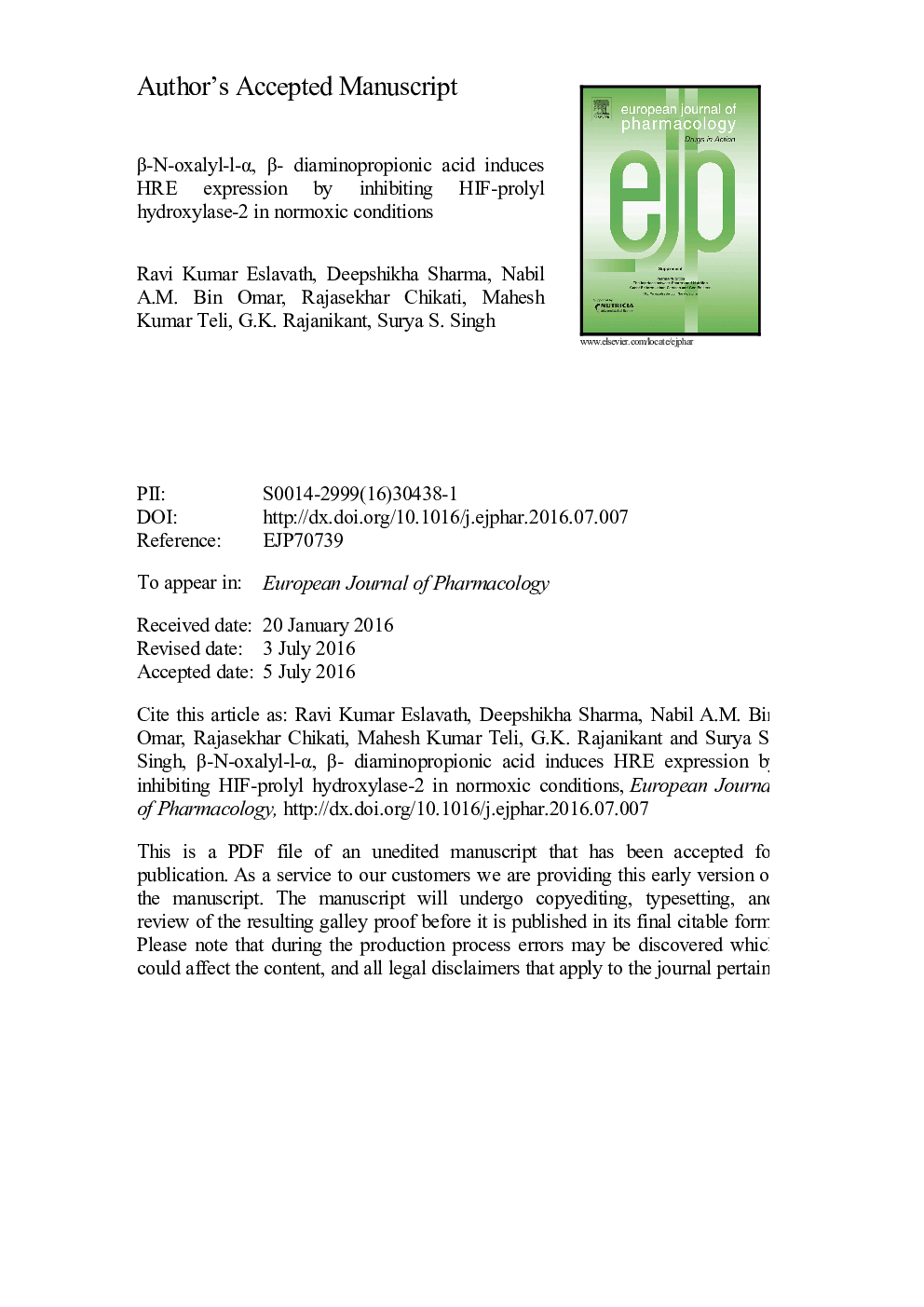| کد مقاله | کد نشریه | سال انتشار | مقاله انگلیسی | نسخه تمام متن |
|---|---|---|---|---|
| 8530099 | 1558889 | 2016 | 26 صفحه PDF | دانلود رایگان |
عنوان انگلیسی مقاله ISI
β-N-oxalyl-L-α, β- diaminopropionic acid induces HRE expression by inhibiting HIF-prolyl hydroxylase-2 in normoxic conditions
دانلود مقاله + سفارش ترجمه
دانلود مقاله ISI انگلیسی
رایگان برای ایرانیان
کلمات کلیدی
PHDβ-N-oxalyl-L-α,β-diaminopropionic acidβ-ODAPN-acetyl l-cysteineODDDOxygen dependent degradation domainNanomolar concentrationxCTdimethyloxalylglycineDMOGSDSHREHIFRMSDDTTvdW - VDWAdenosine Triphosphate - آدنوزین تری فسفاتATP - آدنوزین تری فسفات یا ATPEDTA - اتیلن دی آمین تترا استیک اسید dithiothreitol - دیتیوتریتولsodium dodecyl sulfate - سدیم دودسیل سولفاتhypoxia response elements - عناصر پاسخ هیپوکسیhypoxia response element - عنصر پاسخ هیپوکسیHypoxia-inducible factor - فاکتور القاء کننده هیپوکسیroot mean square deviation - میانگین انحراف مربع ریشهnicotinamide adenine dinucleotide dehydrogenase - نیکوتین آمید آدنین دینکلوتید دهیدروژناز
موضوعات مرتبط
علوم زیستی و بیوفناوری
علم عصب شناسی
علوم اعصاب سلولی و مولکولی
پیش نمایش صفحه اول مقاله

چکیده انگلیسی
Hypoxia inducible factor (HIF)-1α, a subunit of HIF transcription factor, regulates cellular response to hypoxia. In normoxic conditions, it is hydroxylated by prolyl hydroxylase (PHD)-2 and targeted for proteosomal degradation. Drugs which inhibit PHD-2 have implications in conditions arising from insufficient blood supply. β-ODAP (β-N- oxalyl-L-α, β- diaminopropionic acid), a non-protein excitatory amino acid present in Lathyrus sativus, is an α-amino-3-hydroxy-5-methyl-4-isoxazole propionic acid receptor agonist known to activate conventional protein kinase C and stabilize HIF-1α under normoxic conditions. However, the mechanism of HIF-1α stabilization by this compound is unknown. In silico approach was used to understand the mechanism of stabilization of HIF-1α which revealed β-ODAP interacts with key amino acid residues and Fe2+ at the catalytic site of PHD-2. These results were further corroborated with luciferase HRE (hypoxia response element) reporter system in HeLa cells. Different chemical modulators of PHD-2 activity and HIF-1α levels were included in the study for comparison. Results obtained indicate that β-ODAP inhibits PHD-2 and facilitates HIF dependent HRE expression and hence, might be helpful in conditions arising from hypoxia.
ناشر
Database: Elsevier - ScienceDirect (ساینس دایرکت)
Journal: European Journal of Pharmacology - Volume 791, 15 November 2016, Pages 405-411
Journal: European Journal of Pharmacology - Volume 791, 15 November 2016, Pages 405-411
نویسندگان
Ravi Kumar Eslavath, Deepshikha Sharma, Nabil A.M. Bin Omar, Rajasekhar Chikati, Mahesh Kumar Teli, G.K. Rajanikant, Surya S. Singh,